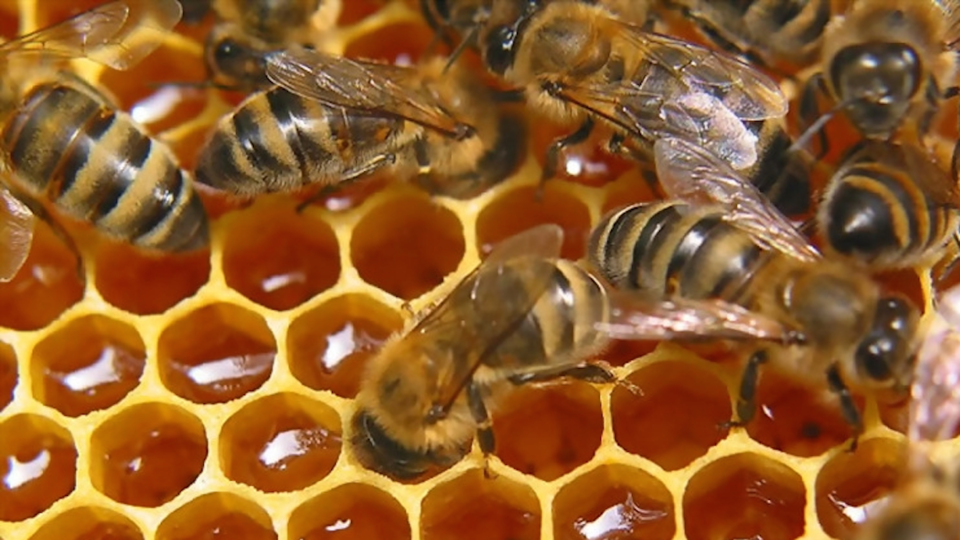Science News
Bee Antibodies

When it comes to honeybees, scientists around the world are scrambling to understand how honey bees stay healthy so when they get in trouble—as they currently are with colony collapse disorder (CCD)—humans can help the social insects survive.
Why so much effort? Honeybees are important for agriculture around the world. Approximately one in three bites of food come from animal-mediated pollination services (valued at around $200 billion annually on a global scale), which in the United States food system, relies heavily on honeybees. Since 2007, beekeepers have seen large declines in bee populations due to CCD. Researchers speculate that CCD is caused by several factors, including pesticides, parasites, and pathogens.
The list of of potential parasites and pathogens is exhaustive. Yan Peng, Julia Grassl, and their colleagues looked specifically at a fungus, Nosema apis, that can spread through a bee colony by contact through its workers. The fungus works its way into the digestive system, damaging it and sometimes killing the bee. One potential pathway of introduction into a colony is through the nuptial flight of the new queen, through which she has contact with around 20 males.
Surprisingly, the team of scientists found that bee semen contains antibodies to protect the bees from the potentially deadly fungus. In fact, these antibodies specifically target N. apis with a one-two punch: “The protein fraction of the seminal fluid induces germination-like rupture of the spore wall, whereas small molecules in the non-protein fraction of seminal fluid kills N. apis spores directly,” the team writes in the Proceedings of the Royal Society B.
This redundancy leaves no chance for the fungal spores to survive during mating, but it leaves other microbes within the honeybee unharmed. The scientists are so impressed by the efficiency of the antibodies in the bee semen, they wonder if they could manipulate the semen to target other parasites—such as the Varroa destructor mite—as well. “Our findings could be of broader significance to master honeybee diseases in managed honeybee stock in the future,” they write. Super semen to the rescue!
Image: Lusik Dovlatyan/Wikipedia